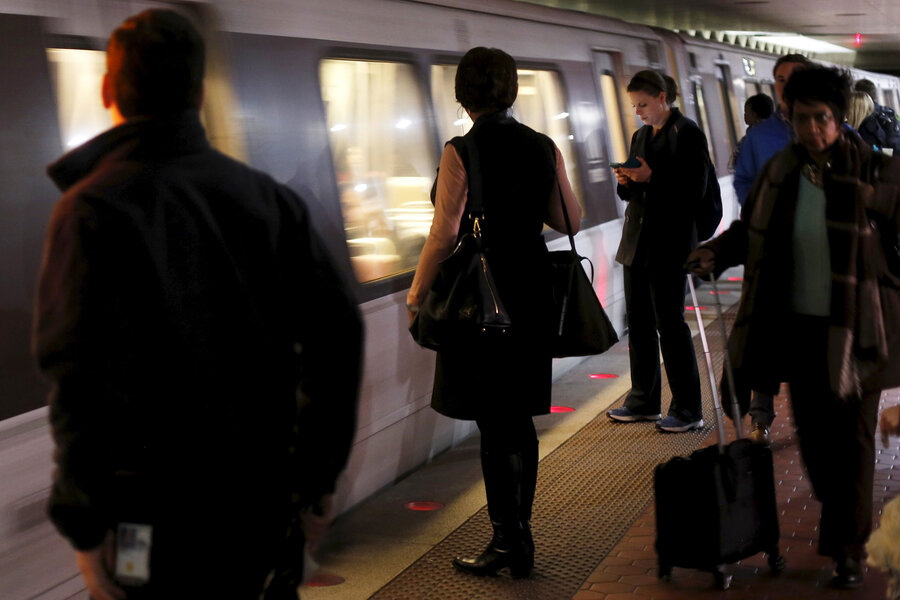DC Metro’s daylong shutdown: A long time coming?
Loading...
Officials overseeing the Metro in Washington, D.C., have ordered the first-ever, 29-hour closure for mechanical reasons on Wednesday, in what some hope could begin an era of needed repairs.
The Washington Metro began life as the best public transit system in the country, but age has somewhat decreased its reliability – and reputation. A third-rail cable fire earlier this week caused delays and prompted authorities to demand an inspection of the entire system. Some saw the news of the shutdown as a sign that officials were getting serious about making improvements to the system.
Joe Schwieterman, a transportation professor, welcomed the move, although he does live in Chicago.
"Washington Metro has become a problem child ... of US metro systems,” Dr. Schwieterman of DePaul University told Reuters. “What was once the pride (of the US system) seems to be allowed to deteriorate to an embarrassing extent."
Regulatory agencies have officially made “urgent calls” for improvement since at least September, but the process of change has been delayed by disagreements over who really oversees public transportation in the nation's capitol. The National Transportation Safety Board called for direct federal oversight of the system via the Federal Railroad Administration last fall, saying the current oversight body lacks both resources and teeth.
The Department of Transportation responded that while the problem is significant, shifting oversight to another agency would slow changes by causing more confusion, especially as an FRA takeover would both separate oversight of the Metro’s trains and buses and require the Metro to adapt to regulations more suited to railroads than urban transit systems. The department suggested a "faster, more effective way to address it" is to embolden the Federal Transit Administration's funding, inspections, and improvement plans using a law Congress has already passed.
Although ridership has declined and social media complaints have become regular, 700,000 people still use the train system daily, and they will have to find an alternative route on Wednesday.
"It's really frustrating. It's how everybody gets to work," Atlee Ahern, an intern with the Justice Department who takes the Metro from her home in Bethesda, Maryland, told the Associated Press. "The whole system shuts down, the whole city shuts down."
Schools, workplaces, city officials, and even the federal government offices are all trying to offer flexibility to workers and families whose customary transportation schedules are compromised by the closure.
Still, this is Washington, DC, so some people are finding opportunity amid crisis. Lyft, the ride-sharing company from San Francisco, is offering a $20 discount to new users.
This report contains material from the Associated Press and Reuters.






